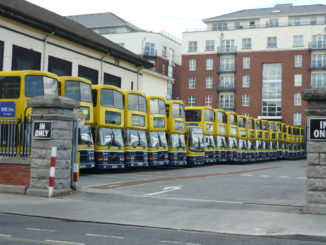
[dropcap]F[/dropcap]ootball, for more than a century-and-a-half, has been the game of the masses. The working man’s leisure. That, though, is precisely the biggest institutional problem the game faces and has always faced. It has been considered a man’s game.
Since the turn of the century, the women’s game all over the world has taken huge strides towards disproving the outdated notion that football is a game for men to play and for men to watch, but until recently Ireland had been left behind. DCU alumnus and Shelbourne player Caolán Carroll feels the Women’s National League (WNL), which was founded in 2011, has helped to rectify this.
“There was no platform for women’s football at a high senior level before the WNL was introduced,” she said.
“It allows women’s football to compete at a level deemed to be the equivalent to the men’s national league.
“The WNL has had significant promotion which is developing more each season, particularly on social media. This is a great way to showcase the league, the players, the facilities and to extend the reach to a wider audience.
Despite the indisputable improvement in the women’s game, Carroll feels that a lack of funding is still a major difficulty.
“Funding will always be an issue for the women’s game in comparison to the men’s game.
“As a player it will always infuriate me to hear some of the comments about how the women’s game is nothing compared to the lads’, in whichever sport that may be. But from a financial perspective, it’s a fact that that men’s games attract more attention.
“There is more demand for places on teams, more demand for tickets and bigger turnouts to games thus giving them the ability to perform in better facilities in front of a wider audience, promoting more sponsorship and general interest.
Although public interest in the women’s game does pale when compared to the men’s game, there is definitely a positive trend. The Women’s Football Association of Ireland (WFAI) Cup final, which Caolán’s club Shelbourne won 5-0 against Wexford Youths, was played in the national football stadium in front of several thousand people and was nationally televised.
“Ground is certainly being made here,” according to Carroll. “But I do think there is a limit to how much progress can be made realistically. I guess that’s just the nature of things.
“Where there is more demand and attention, the funding will follow. If women’s games attracted more support than men’s games, we would be having this conversation in the opposite manner.
“So I don’t think being women is the issue, it’s simply a supply in demand one.”
DCU’s own senior women’s team had a promising but ultimately heartbreaking season last term. They reached the final of the Women’s Soccer Colleges Association of Ireland First Division final before falling to the University of Limerick after extra time by a score of 6-4.
Caolán wasn’t involved due to academic commitments but she’s optimistic about the team’s chances to go one better this year.
“Although the league was lost the girls seemed to have a good season. It was certainly an improvement on previous ones. Hopefully they will challenge well in the league and finish in a good position as well as in the college cups and intervarsities.
“I’ve always said it but DCU dance around their GAA teams and the men’s soccer team. It would be great to see more investment from the university itself.”
Aidan Geraghty
Image credit: Sarah Rowe




Leave a Reply